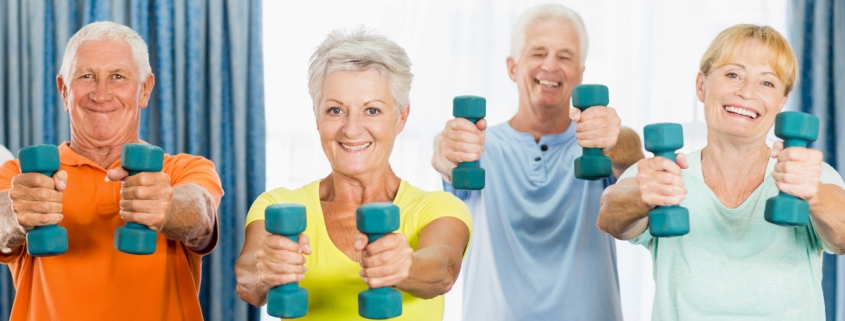Keep Moving for Your Heart!
Research shows regular exercise can slow cardiovascular aging.
As you age and become less active, your heart just like any other muscle in your body can weaken. Healthy blood vessels are flexible however with age blood vessels can become less elastic creating more work on the heart to pump.
Many of the effects of aging on the heart and blood vessels can be reduced by regular exercise. Just like other muscles, it’s possible to strengthen your heart too. Regular cardio exercise continues to display powerful benefits on slowing down the hearts aging process. Exercise is beneficial at any age; always consult with your physician before starting a new exercise routine.
Physical Activities for Older Adults
The US Department of Health & Human Services has established key exercise guidelines for older adults. For substantial health benefits, adults are encouraged to do at least 150 minutes of moderate aerobic activity or at least 75 minutes of vigorous aerobic activity a week.
AEROBIC ACTIVITIES:
- Walking or hiking
- Dancing
- Swimming
- Water aerobics
- Bicycle riding
- Aerobic exercise classes
MUSCLE-STRENGTHENING ACTIVITIES:
- Weight machines
- Hand-held weights
- Digging in the garden
- Carrying groceries
- Some forms of tai chi
- Some yoga postures
Also, the American Heart Association recommends walking at least 150 minutes a week or 10,000 steps a day. Studies show for every hour of brisk walking, life expectancy for some people may increase by two hours.
Therapy Can Help with Cardiac Conditions
If you have a cardiac/cardiopulmonary condition, talk to your doctor about your treatment plan and ask if Physical or Occupational therapy can help. Therapy interventions include help with energy conservation techniques, activity tolerance training, sternal precautions after surgery, adaptive equipment training, stress management strategies, breathing techniques, home exercise programs, and patient education on diet and heart disease. The goal of therapy is to help you control your symptoms and resume an active and productive life within the limits of your condition.
Resources: Dept. of Health & Human Services, American Heart Association







Leave a Reply
Want to join the discussion?Feel free to contribute!